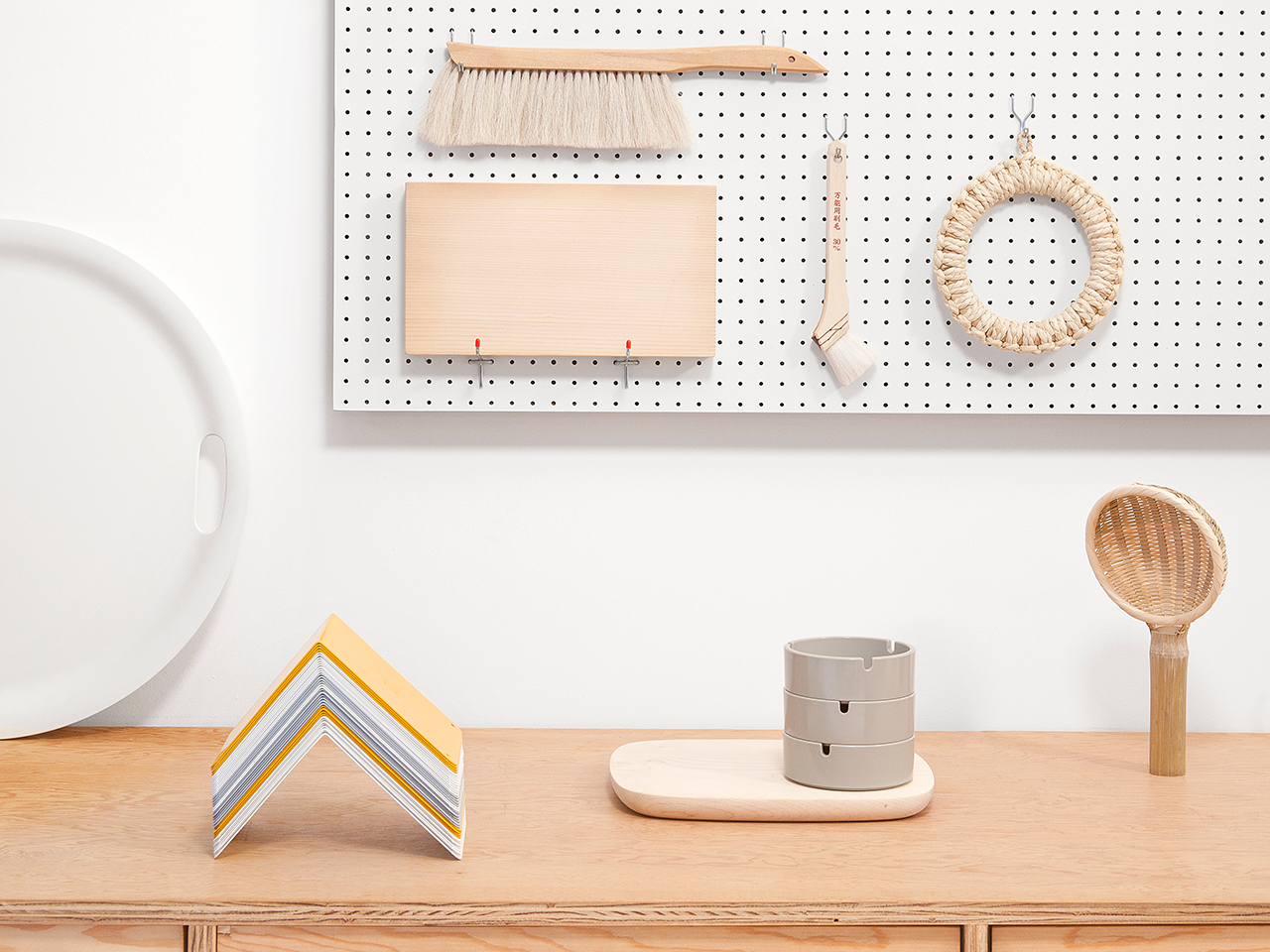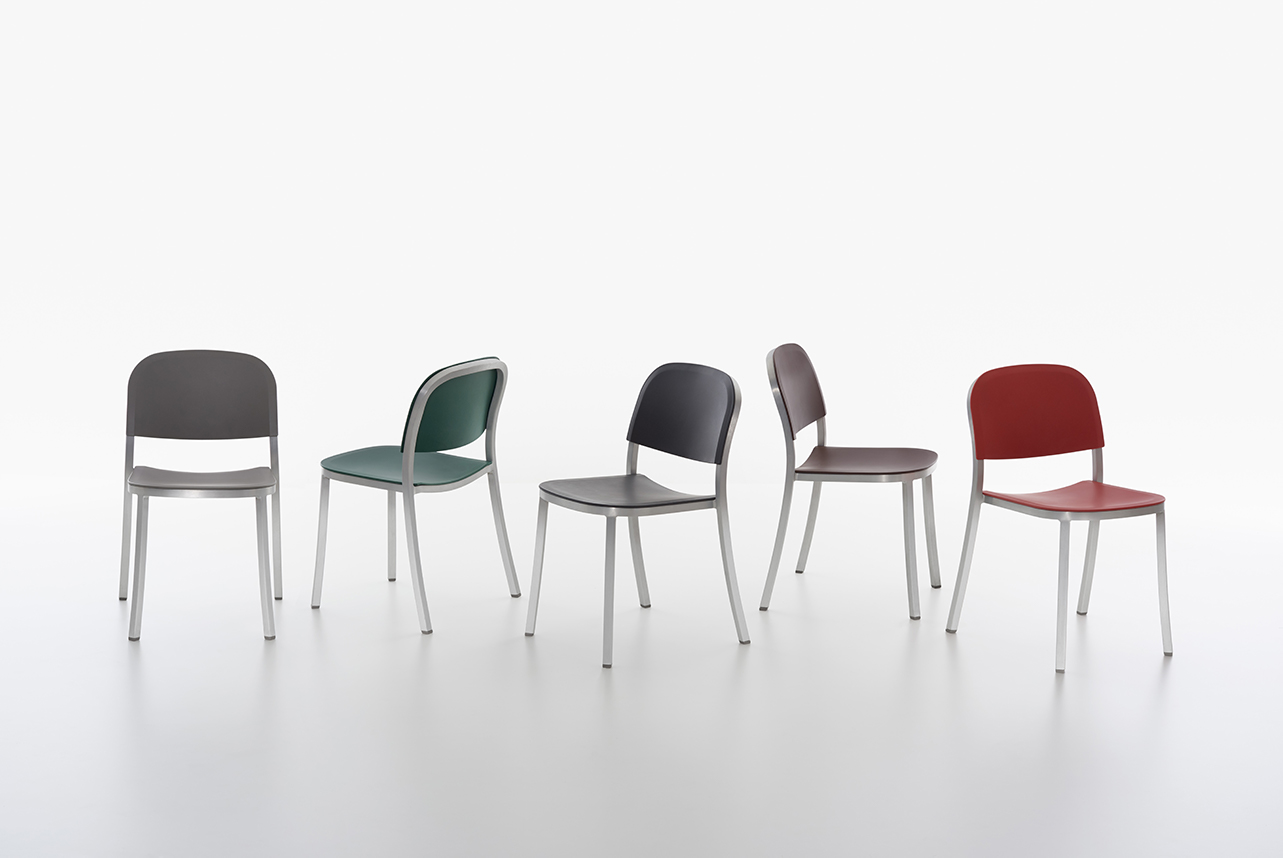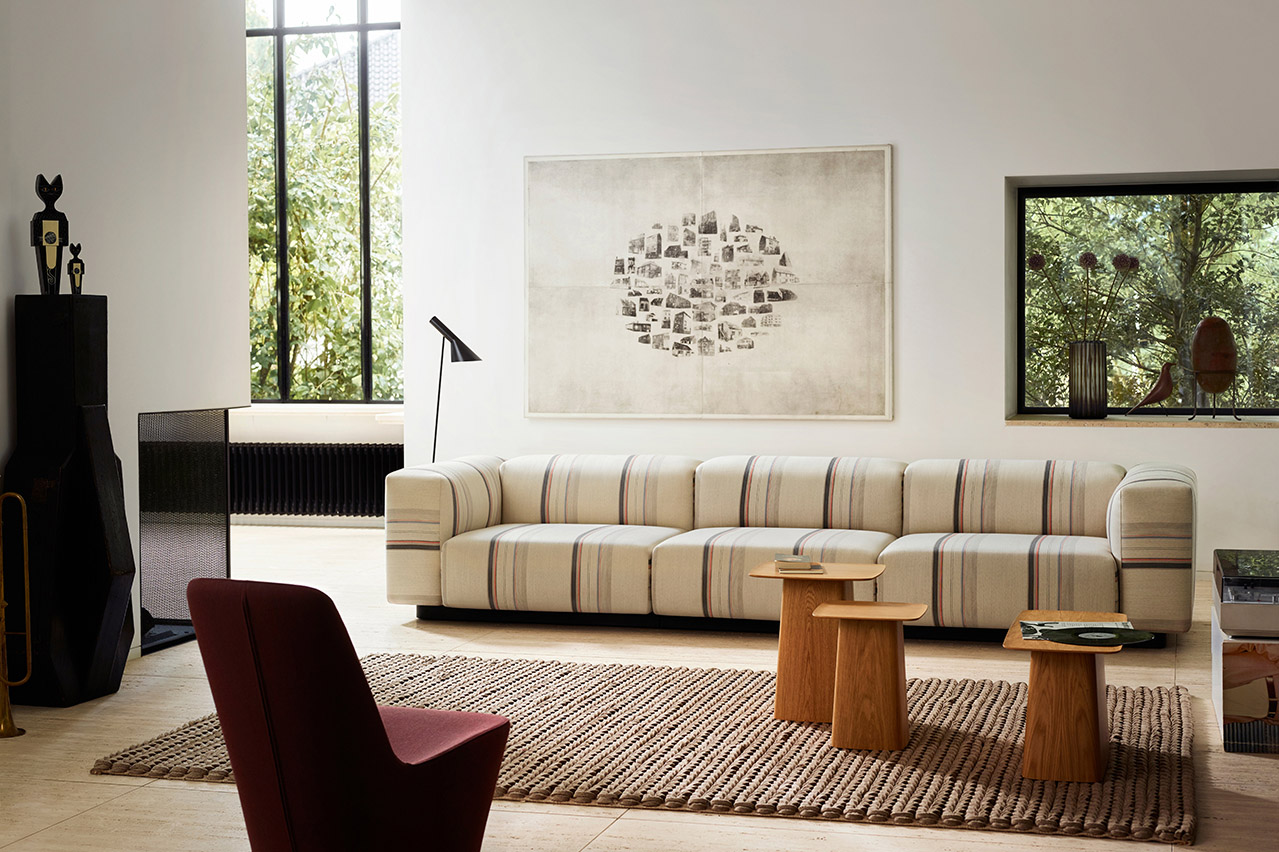Lighting, electronics, kitchenware, the iconic Thinking Man’s Chair, even a German tram—Jasper Morrison has designed in just about every category over his illustrious, three-decade-plus career. It might seem counterintuitive to label a designer who has notably described his work as “Super Normal” and praised design anonymity as superstar luminary, but there’s no denying his stature within the industrial design arena. For anyone who cares about smart, simple, painstakingly poured-over product design, a visit to the Jasper Morrison Shop in London, which sits adjacent to his studio, is a must-visit.
The British designer recently took time out of his day to chat with us about product “aura,” overcoming ego, loving design aesthetics that wildly diverge from one’s own, and more.
Your 2006 exhibition with Naoto Fukawawa explicitly explored the concept of “Super Normal.” What exactly does that mean to you, and does that impulse drive your designs?
“Super Normal” summarizes the numerous qualities that set some objects apart from others in terms of performance. These qualities could be quite obvious ones like super functionality, less obvious ones like atmospheric contribution, or even subjective qualities like, “It’s the wooden spoon I always reach for when I’m cooking.” A Super Normal object generally has a few of these qualities combined and may have been in use for some time before qualifying as Super Normal in the mind of the user. Super Normal objects tend to be understated in a visual sense but possess a kind of aura that contributes to their appreciation for the atmosphere or the pleasure they provide in use. It’s not an easy term to explain and I could go on, but to summarize, they are things that we miss the most if lost or broken. I don’t think I consciously try to design Super Normal objects because it’s almost impossible to predict how successful they will be in the long term, but it does serve as a kind of guiding principal in designing things.

Designs from the Jasper Morrison shop. Photo courtesy of Jasper Morrison
I know Sheridan Coakley took an interest in your work back in the ’80s, when you were still at the Royal College of Art. What did that co-sign mean to you back then and how has your relationship evolved with Sheridan? Do you feel a sense of obligation to promote young talent you find noteworthy?
Sheridan was the first person to produce a design of mine, so you can imagine that makes it special. I’d walked past his original shop in Notting Hill in my earliest design student days, and his interest in producing my designs was a huge confidence boost. We are still neighbors, but now on the east side of town, where he relocated to Shoreditch before anyone ever dreamed of being there. Earlier it had been an area for furniture-making, which is probably what drew him to it. There was until recently a wood veneer company we used to go to that was on the site of Shakespeare’s first playhouse! I can’t claim to be a direct promoter of young talent; I’m hopeless as a teacher because I have only one way of designing and it doesn’t work for everyone else, but through exhibitions and publications I hope I at least offer a position to follow or to challenge.
Related | Naoto Fukasawa on Why Happiness Leads to Better Design
What’s a typical workday like for you?
I don’t really have workdays unless I’m in the studio, which is relatively rare. I have come to see it as an ongoing thinking process, which can exist alongside whatever else I happen to be doing. The only part of it that feels like work is the answering of emails. I used to spend a lot of time in the studio and rarely saw anything outside, and when the Super Normal realization occurred I realized I should be closer to everyday life.
You’ve talked about how “anonymous” objects tend to have greater power in your opinion. Can you unpack what that means to you? Do you have any designs you feel are particularly illustrative of that? Does that framework hold true across categories?
There’s a huge difference in attitude between someone designing something anonymously and someone designing something that will bear their name. The creative ego involved in the latter is counterproductive and usually leads to over-design, superfluous thinking, and unnatural results. What I aim to do is to be as close as possible to the mindset of the anonymous designer without being fake about it. The key is to design things that seem natural in everyday surroundings. A great deal of design fails in that respect.

Punkt. MP 02. Photo courtesy of Jasper Morrison
I was taken by your recent designs for the Punkt phone. Do you feel a desire in your own professional and/or personal life to withdraw from the digital landscape? Is that even possible for someone in industrial design?
I don’t have a strong opinion either way. I see the addictive nature of smartphone usage, but I also see the advantages. I think it’s for individuals to decide on how to manage their usage, but I do think there’s a place for an appealing nonsmart phone.
“Whatever makes a good object is a valid approach. People tend to hide their inadequacies behind sets of rules and manifestos.”
I read about how you had a profound, positive reaction to the Memphis school when you were at university but ultimately knew it wasn’t you. How often are you moved by designs that you feel are removed from your own design DNA? Can you think of any examples?
I immediately knew it wasn’t me. Though I have only one way of designing and it tends to be to reduce things visually to their essential needs, it is by no means minimalistic—on the contrary I want the object to be expressive and poetic and characterful as well as being paired down. That said, I can easily be drawn to appreciating more exotic forms of design. I recently discovered Josef Frank’s theories and designs. He was fiercely anti-modernist, as he saw it as a restricting doctrine that negated a certain freedom of expression that he considered brought life to things. I used to defend modernism, but these days I have more sympathy for Frank’s viewpoint! Whatever makes a good object is a valid approach. People tend to hide their inadequacies behind sets of rules and manifestos.
Related | Tom Dixon on Design’s Infinite Possibilities
Do you have any favorite designs of your own?
What I like of my design is the cumulative effect, seeing them in use and doing their thing in real situations. Having said that, I’m proud of what I have achieved with Emeco and Vitra recently. I get along very easily and well with Gregg Buchbinder and the Emeco team and Rolf Fehlbaum and the team at Vitra, and the recent results are among the best I have managed with any manufacturer.

1 Inch Collection chairs by Jasper Morrison for Emeco. Photo courtesy of Emeco



